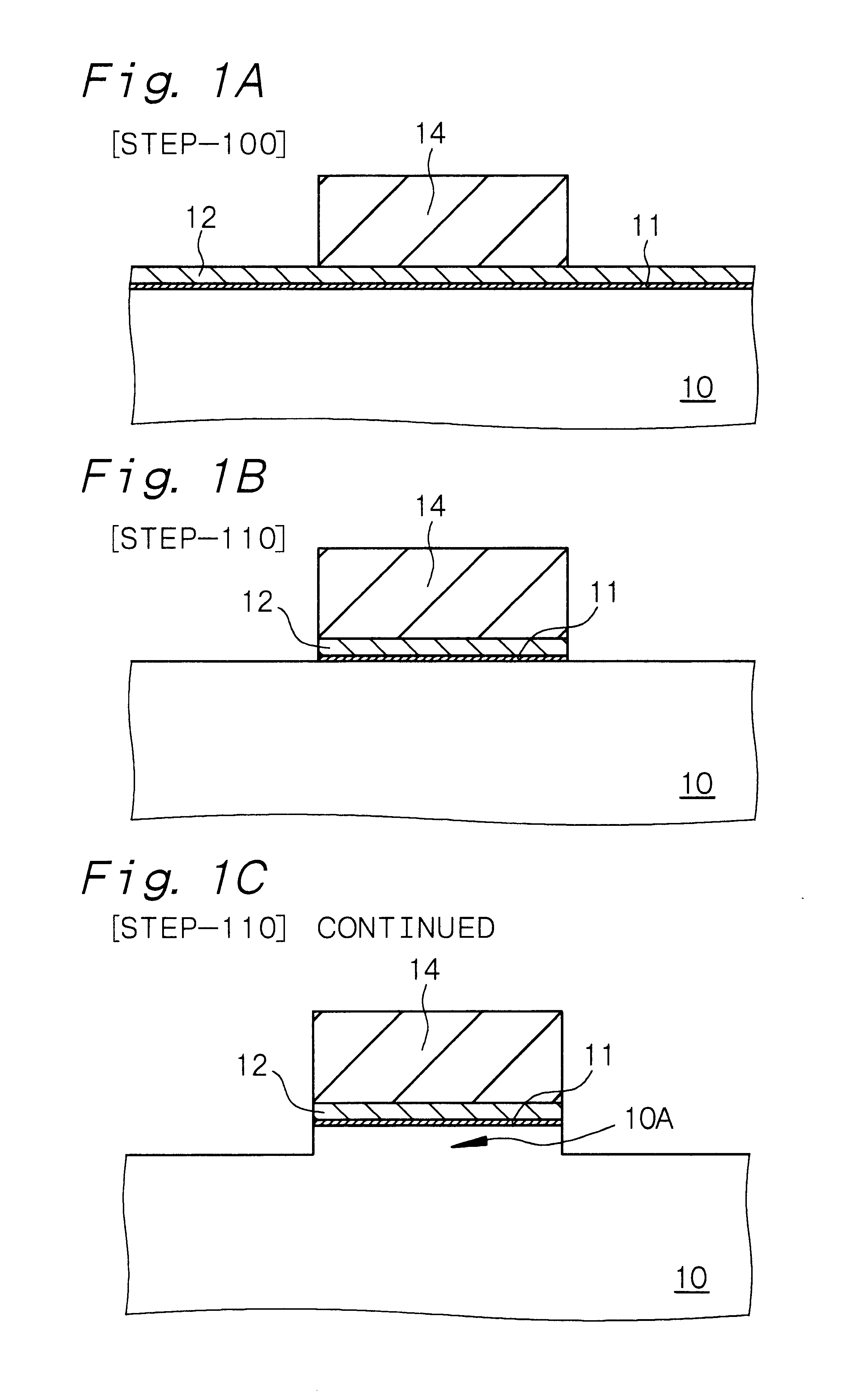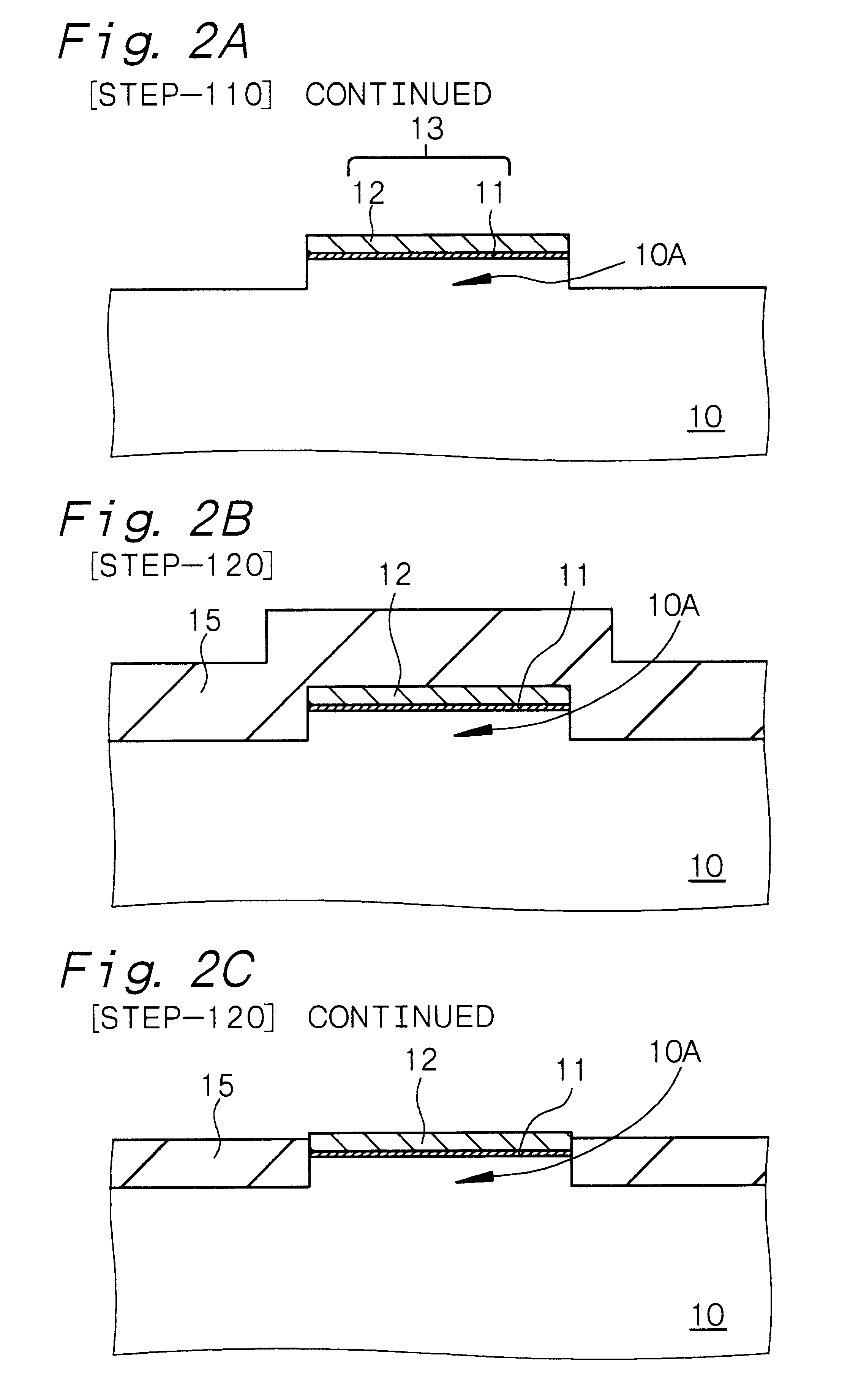Process for the production of semiconductor device
a semiconductor and production process technology, applied in the direction of semiconductor devices, electrical appliances, transistors, etc., can solve the problems of difficult to form a uniform semiconductive layer having difficult to form a semiconductive layer with a particularly thin thickness, and large critical dimension loss, so as to reduce the operation speed of the semiconductor device
- Summary
- Abstract
- Description
- Claims
- Application Information
AI Technical Summary
Benefits of technology
Problems solved by technology
Method used
Image
Examples
example 1
is concerned with a process for the production of a semiconductor device according to the first aspect of the present invention. That is, the process includes the steps of etching a semiconductor substrate to form a convex portion and a concave portion in the semiconductor substrate and filling the concave portion with an insulating film. The process for the production of a semiconductor device in Example 1 will be explained with reference to the steps shown in FIGS. 1A, 1B, 1C, 2A, 2B, 2C, 3A, 3B, 3C, 4A, 4B, 5A, 5B, 6A and 6B showing schematic partial cross-sectional views of a semiconductor substrate, hereinafter. In addition, FIGS. 1A, 1B, 1C, 2A, 2B, 2C, 3A, 3B, 3C, 4A, 4B, 5A, 5B and 6A are schematic partial cross-sectional views of a semiconductor substrate, taken by cutting them along the length direction of a gate electrode, and FIG. 6B is a schematic partial cross-sectional view of the semiconductor substrate, taken by cutting them along the width direction of a gate elect...
example 2
Example 2 is concerned with a process for the production of a semiconductor device according to the second aspect of the present invention. That is, the process includes the steps of etching a semiconductor substrate to form a convex portion and a concave portion in the semiconductor substrate and forming an oxide layer in the concave portion by a selective oxidation method (LOCOS method). The process for the production of a semiconductor device in Example 2 will be explained with reference to the steps respectively shown in FIGS. 7A, 7B, 8A, 8B, 9A, 9B, 10A, 10B and 11 showing schematic partial cross-sectional views of a semiconductor substrate, hereinafter. In addition, FIGS. 7A, 7B, 8A, 8B, 9A, 9B, 10A, 10B and 11 are schematic partial cross-sectional views of a semiconductor substrate, taken by cutting them along the length direction of a gate electrode.
[Step-200]
First, a patterned layer 13 is formed on the surface of a semiconductor substrate 10 composed of a silicon semiconduc...
PUM
 Login to View More
Login to View More Abstract
Description
Claims
Application Information
 Login to View More
Login to View More - R&D
- Intellectual Property
- Life Sciences
- Materials
- Tech Scout
- Unparalleled Data Quality
- Higher Quality Content
- 60% Fewer Hallucinations
Browse by: Latest US Patents, China's latest patents, Technical Efficacy Thesaurus, Application Domain, Technology Topic, Popular Technical Reports.
© 2025 PatSnap. All rights reserved.Legal|Privacy policy|Modern Slavery Act Transparency Statement|Sitemap|About US| Contact US: help@patsnap.com



